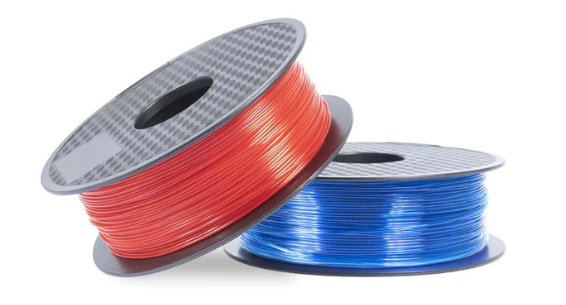Getting your hands on a 3D printer unlocks a world of opportunities. One requirement unites all of these needs: the best 3D printer filament. This requirement applies to valuable prosthetics and leisure items like tabletop gaming minis.
There are numerous options for 3D printer filament, the essential component that keeps you producing. But what kinds of filament are there for 3D printers? When ought one to use them?
Additionally, there are unique blends with peculiar qualities like electrical conductivity and brightness made from materials like nylon, polycarbonate, carbon fiber reinforced, and polypropylene. With so many options available, creating good, eye-catching, and high-performing prints is simpler than ever.
There are numerous wood-PLA 3D printer filaments on the market right now. The spectrum also includes less popular species like Bamboo, Cherry, Coconut, Cork, and Olive. These include common wood varieties like Pine, Birch, Cedar, Ebony, and Willow.
There are trade-offs with utilizing wood, like other kinds of best filament for 3D printers. In this instance, the tactile and aesthetic appeal is at the expense of strength and flexibility.
Be careful while printing wood at a specific temperature because too much heat might cause the wood to appear practically burnt or caramelized. On the other hand, a little post-print processing can significantly enhance the basic aesthetic of your wooden creations! Additionally, the wood-filled filament can hasten the deterioration of your 3D printer nozzle since the abrasive wood fibers that make up the product will rip through softer items like brass.
Maybe you want your prints to have a different style, something a little thicker and shinier. Well, you could use metal for that. Metal-filled 3D printer filament isn’t entirely made of metal, unlike wood-filled filament. It’s a combination of PLA or ABS and metal powder. However, the results still have a metal-like appearance and feel. Blends are typically denser than pure PLA or ABS, so even the weight is metallic-like.
The types of metal 3D printer filaments now on the market include bronze, brass, copper, aluminum, and stainless steel. Don’t be hesitant to weather, tarnish, or polish your metal products after printing if there’s a special appearance you’re going for; a little post-processing may go a long way.
Environmentally friendly best 3D printer filaments fall into a particular category since their most desirable quality is not inherent to the way they are made. Print errors and material waste are unavoidable features of 3D printing, as most amateurs can confirm. That necessitates disposing of a ton of plastic.
Even though the majority of PLA is industrially biodegradable, composting and recycling programs sometimes do not accept it, which leads to other plastic being sent to landfill. The environmental impact that plastic trash has on our earth is one of the goals of “environmentally friendly” filaments, albeit it’s best to see this as a relative measure.
The type of filament you use will significantly impact the quality of your 3D prints. High-quality filament has a uniform diameter, is coiled evenly and with the ideal amount of tension onto the spool, and won’t tangle when unwound.
In addition to employing high-quality filament, successful prints are frequently prevented by having good print bed stickiness. It’s time to get printing now that you have the best 3D printer money can buy! You will soon need some printing material if you select an FDM printer, the most popular kind of 3D printer for amateurs. The filament is the substance we utilize for FDM 3D printing and is accessible. However, there are various filament kinds, either bad for some projects or excellent for others.
Take your time and visit Snapmaker to get the best filament for 3D printers at an affordable price.












